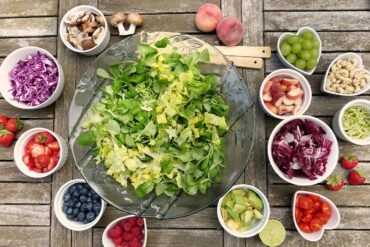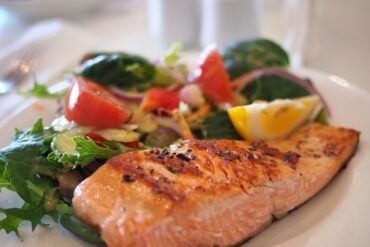Gluten-Free Goodness: Navigating a Gluten-Free Diet for Celiac Disease and Sensitivity

Table of Contents
Understanding Celiac Disease: The Basics
Celiac disease is an autoimmune disorder that affects the small intestine. It is triggered by the consumption of gluten, a protein found in wheat, barley, and rye. This condition affects approximately 1% of the global population, making it relatively common.
When individuals with celiac disease consume gluten, their immune system responds by attacking the small intestine. This reaction damages the villi, which are tiny finger-like projections lining the small intestine. As a result, the absorption of nutrients from food becomes impaired, leading to various health issues.
Symptoms of celiac disease can vary greatly from person to person. Some individuals may experience digestive problems such as bloating, diarrhea, or constipation. Others may have symptoms unrelated to the digestive system, such as fatigue, joint pain, or skin rashes. In some cases, celiac disease may be asymptomatic, making it challenging to diagnose.
Diagnosis of celiac disease typically involves a combination of blood tests and an intestinal biopsy. Blood tests can detect specific antibodies that are produced in response to gluten. If these antibodies are present, further evaluation through an intestinal biopsy may be necessary to confirm the diagnosis.
The only treatment for celiac disease is a strict gluten-free diet. This means avoiding all foods and products that contain gluten. It is important to carefully read food labels and be aware of hidden sources of gluten, such as sauces, condiments, and processed foods. Some individuals with celiac disease may also need to avoid cross-contamination, which can occur when gluten-free foods come into contact with gluten-containing foods or surfaces.
Following a gluten-free diet can be challenging, but it is essential for managing celiac disease. It is important to focus on naturally gluten-free foods, such as fruits, vegetables, lean meats, and gluten-free grains like quinoa or rice. There are also many gluten-free alternatives available, such as bread, pasta, and baking mixes, which can help maintain a varied and enjoyable diet.
Living with celiac disease requires careful planning and education. It is advisable to work with a registered dietitian who specializes in celiac disease to ensure a nutritionally balanced diet. They can provide guidance on meal planning, label reading, and strategies for dining out.
- Gluten-free oats, when labeled as such, can be consumed by most individuals with celiac disease.
- It is important to avoid cross-contamination by using separate cooking utensils and avoiding shared toasters or deep fryers.
- Non-food items, such as medications and cosmetics, may also contain gluten and should be checked for gluten-free status.
By understanding the basics of celiac disease, individuals can navigate a gluten-free diet more effectively, manage their symptoms, and maintain good overall health.
Identifying Gluten-Free Foods: What to Look for
Following a gluten-free diet is essential for individuals with celiac disease or gluten sensitivity. However, identifying gluten-free foods can be challenging, as gluten can hide in various products. Here are some essential tips to help you navigate a gluten-free diet:
- Read food labels: The first step in identifying gluten-free foods is to carefully read food labels. Look for products that are specifically labeled “gluten-free.” Additionally, check for any ingredients that contain wheat, barley, rye, or oats, as they may contain gluten.
- Look for certification: Some products bear a certification seal from organizations that test and guarantee their gluten-free status. Look out for labels such as the Gluten-Free Certification Organization (GFCO) or the Celiac Support Association (CSA) to ensure the product is safe to consume.
- Be cautious with cross-contamination: Cross-contamination can occur when gluten-free products come into contact with gluten-containing foods during processing or preparation. Look for labels that mention the product is made in a dedicated gluten-free facility or has undergone rigorous testing for cross-contamination.
- Explore naturally gluten-free options: Many whole foods are naturally gluten-free, such as fruits, vegetables, meats, and dairy products. Incorporate these into your diet to ensure a well-rounded, gluten-free meal plan.
- Utilize gluten-free substitutes: Fortunately, there are many gluten-free substitutes available for common gluten-containing ingredients. Look for products like gluten-free flours, bread, pasta, and cereals. However, always double-check the labels to ensure they are genuinely gluten-free.
- Seek expert advice: If you are unsure about certain foods or ingredients, consult with a registered dietitian or healthcare professional who specializes in gluten-free diets. They can provide guidance and help you make informed choices.
Remember, maintaining a gluten-free diet is crucial for managing celiac disease or gluten sensitivity. By familiarizing yourself with gluten-free labeling, seeking certified products, and understanding cross-contamination risks, you can confidently navigate your gluten-free journey and enjoy the benefits of a healthier lifestyle.
Navigating Gluten-Free Menus: Dining Out with Confidence
When you have celiac disease or gluten sensitivity, dining out can be a daunting experience. However, with a little preparation and knowledge, you can navigate gluten-free menus with confidence and enjoy a delicious and worry-free meal. Here are some tips to help you dine out safely:
- Research restaurants in advance: Before choosing a restaurant, do some research online. Look for establishments that offer gluten-free options or have dedicated gluten-free menus. Reading reviews from other gluten-sensitive diners can also provide insights into the restaurant’s understanding of gluten-free requirements.
- Call ahead: Once you have selected a restaurant, call ahead to inquire about their gluten-free options. Ask if they have a separate gluten-free preparation area to avoid cross-contamination. It’s also a good idea to confirm that the staff is knowledgeable about gluten-free diets.
- Communicate your needs: When you arrive at the restaurant, inform your server about your dietary restrictions. Clearly explain that you need a gluten-free meal and ask if they can accommodate your needs. Be prepared to answer questions about the severity of your gluten intolerance or celiac disease.
- Read menus carefully: When you receive the menu, carefully read the gluten-free options. Look for any potential hidden sources of gluten, such as sauces, marinades, or dressings. Be cautious of cross-contamination risks, such as shared fryers or cooking utensils.
- Ask questions: Don’t hesitate to ask questions about how dishes are prepared. Inquire about ingredients, cooking methods, and any potential cross-contamination risks. A knowledgeable server or chef should be able to provide you with accurate information.
- Be prepared for modifications: In some cases, you may need to ask for modifications to make a dish gluten-free. For example, you can request gluten-free bread or buns, substitute gluten-free pasta, or ask for no croutons on a salad. Most restaurants are willing to accommodate these requests.
- Trust your instincts: If you feel uncertain or uncomfortable about the restaurant’s ability to provide a safe gluten-free meal, it’s okay to choose another option. Your health and well-being should always be the top priority.
- Express gratitude: When the restaurant successfully accommodates your gluten-free needs, express your gratitude to the server and the kitchen staff. Positive feedback reinforces their efforts and encourages them to continue offering gluten-free options.
Remember, dining out with a gluten-free diet is possible with the right approach. By doing your research, communicating effectively, and asking the right questions, you can enjoy a safe and satisfying meal at restaurants while managing your celiac disease or gluten sensitivity.
Gluten-Free Cooking: Tips and Tricks for Delicious Meals
Living with celiac disease or gluten sensitivity doesn’t mean sacrificing flavor and variety in your meals. With a few helpful tips and tricks, you can create delicious gluten-free dishes that satisfy your taste buds and support your health. Here are some ideas to get you started:
- Experiment with alternative flours: Gluten-free baking doesn’t have to be limited to just rice or corn flour. Explore the world of alternative flours like almond, coconut, or tapioca flour. Each flour has its own unique flavor and texture, allowing you to create a wide range of dishes.
- Master the art of substitution: Many traditional recipes can be adapted to be gluten-free by simply swapping out certain ingredients. For example, use gluten-free breadcrumbs or crushed gluten-free cereal instead of regular breadcrumbs for coating meats or making meatballs. You can also replace regular pasta with gluten-free varieties made from rice, quinoa, or lentils.
- Embrace naturally gluten-free foods: Incorporate more fresh fruits, vegetables, lean proteins, and whole grains into your diet. These foods are naturally gluten-free and provide essential nutrients. Explore new recipes and experiment with different cooking methods to keep your meals exciting and enjoyable.
- Read labels and be aware of hidden gluten: Gluten can hide in unexpected places, such as sauces, dressings, and seasonings. Always read labels carefully to ensure that the products you use are gluten-free. Look for certifications or labels indicating that a product is gluten-free to be confident in your choices.
- Utilize gluten-free alternatives: Thanks to the growing demand for gluten-free options, there are now a plethora of gluten-free alternatives available in stores. From bread and tortillas to pizza crusts and cookies, you can find gluten-free versions of your favorite foods. Experiment with different brands and find the ones that best suit your taste and dietary needs.
- Get creative with spices and seasonings: Enhance the flavors of your gluten-free dishes by experimenting with a variety of spices and seasonings. From garlic and herbs to exotic blends, spices can take your meals to the next level. Make sure to check that the spices you use are gluten-free, as some may contain hidden additives.
Remember, transitioning to a gluten-free diet may require some adjustments, but it doesn’t mean compromising on taste. With these tips and tricks, you can enjoy a wide array of delicious gluten-free meals that nourish your body and satisfy your cravings.
Living a Gluten-Free Lifestyle: Support and Resources
Adopting a gluten-free diet can be challenging, but with the right support and resources, it can become a seamless part of your lifestyle. Here are some valuable resources and sources of support to help you navigate your gluten-free journey:
- Celiac Disease Foundation (CDF): The CDF is a nonprofit organization dedicated to supporting individuals with celiac disease. Their website offers a plethora of information, including educational materials, recipes, and a directory of gluten-free products and restaurants.
- Gluten Intolerance Group (GIG): GIG provides support, education, and advocacy for those with gluten-related disorders, including celiac disease and gluten sensitivity. Their website offers a variety of resources, such as a gluten-free certification program, a restaurant certification program, and gluten-free grocery shopping guides.
- Online Communities: Joining online communities can be immensely helpful, as they allow you to connect with others who are also living a gluten-free lifestyle. Websites like Celiac.com, Gluten-Free Living, and Gluten-Free Goddess offer forums, recipes, and tips for navigating a gluten-free diet.
- Support Groups: Local support groups can provide a sense of community and understanding. Contact your local hospital or celiac disease center to inquire about support groups in your area.
- Registered Dietitian: Consult with a registered dietitian who specializes in gluten-free diets. They can provide personalized guidance, meal planning, and help you ensure you are meeting your nutritional needs while avoiding gluten.
- Gluten-Free Apps: Utilize smartphone apps like Find Me Gluten Free, Gluten Free Scanner, or Gluten Free on a Shoestring to locate gluten-free restaurants, scan product barcodes for gluten-free verification, and discover budget-friendly gluten-free recipes.
Remember, living a gluten-free lifestyle is not just about eliminating gluten from your diet; it’s also about finding delicious alternatives and maintaining a well-balanced and nutritious eating plan. With the support and resources available, you can successfully navigate your gluten-free journey and embrace a healthier, gluten-free life.


























